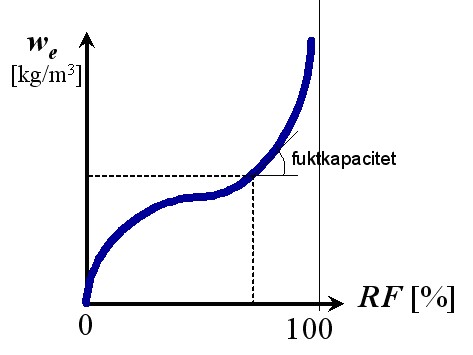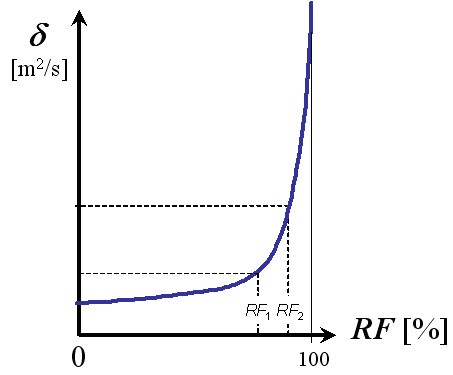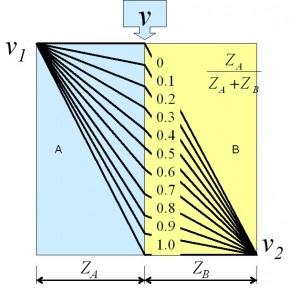To be able to predict moisture conditions four parts are essential:
1. Two material properties for each material (both are strongly moisture dependent!)
- The Sorption curve, i.e. the relationship between moisture content and state of moisture, w(RF)
- The Moisture transport coefficient, e.g. δ, or resistance to moisture flow, Z
 |
 |
2. Climatic conditions (i.e. ”boundary conditions”) around the material surfaces. That kind of data can be found from meteorological data, e.g. from the software ”Klimatdata” at www.fuktcentrum.se, information on the use of the building, information on conditions during construction etc.
3. Initial moisture conditions of each material, e.g. moisture content or RH at the start of the calculation.
4. Calculation tool, depending on what type of calculation to be done.
- Steady-state prediction, e.g. moisture distribution after a long time when the materials are in equilibrium with the surroundings and the moisture flux is constant. For such a calculation only parts 1b and 2 are required, but not part 1a or 3.
- Non-steady state prediction, i.e. a calculation where the moisture conditions change with time or what time it takes to reach a certain moisture level, e.g. a drying time. For such a calculation all three parts 1-3 are needed.
In its most simple form calculation tools for steady-state and non-steady state are shown in these two pictures.
 |
 |
A simple method (left) to predict steady-state moisture conditions between two materials A and B (Z is the resistance to moisture flow and v is the vapour content).
A simple way (right) to predict the non-steady state moisture changes in a material C that is surrounded by two materials A and B.
Tools for moisture calculations are available (in Swedish) at the tab ”SVENSKA/Beräkningsverktyg och hjälpmedel”. They will soon be translated into English and made available here, at the tab ”Tools & literature”.
